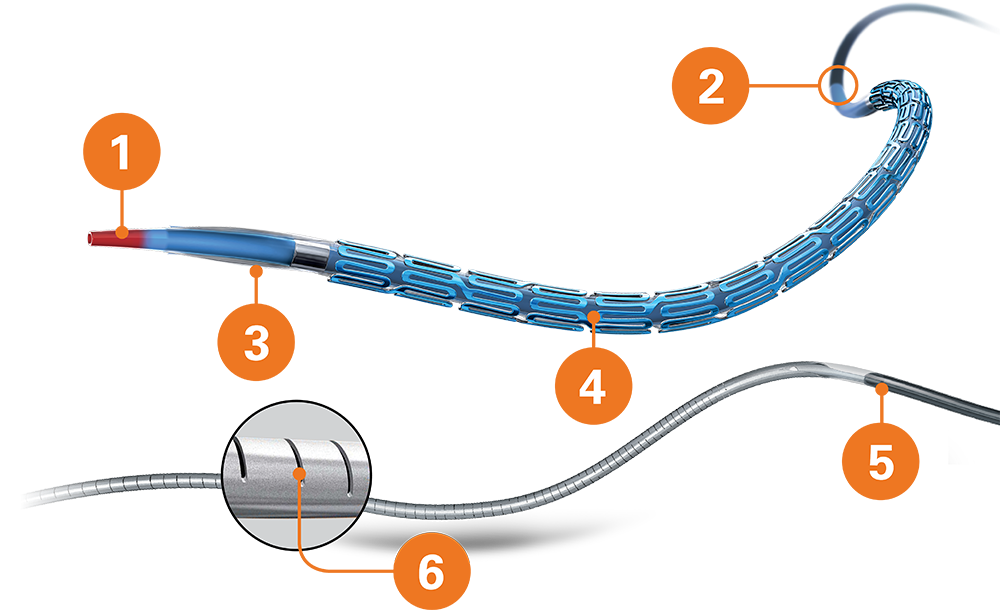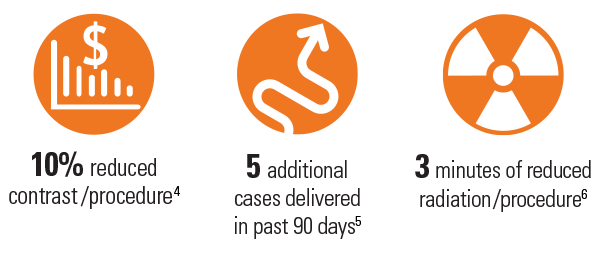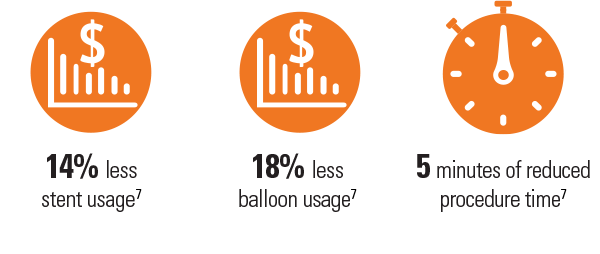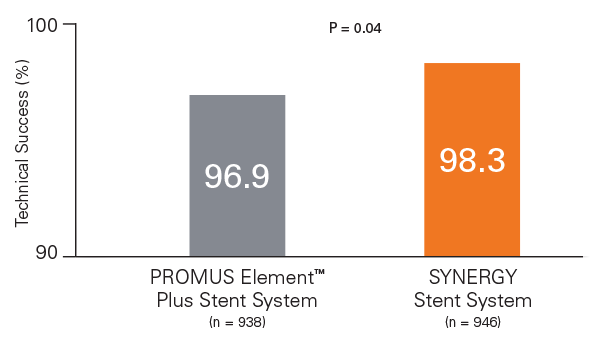SYNERGY™
Everolimus-Eluting Platinum Chromium Coronary Stent System
SYNERGY BP Stent System May Increase Likelihood of a Successful PCI1
In a study of 116 PCI cases* where 2nd generation

Key features that enhance the acute performance of SYNERGY BP Stent:
- Short red tip improves flexibility and visibility
- Bi-Segment™ Inner Lumen Catheter to provide outstanding flexibility and pushability**
- Dual-layer PEBAX™ Balloon for optimal compliance and minimal balloon growth
- Lowest stent profile**
- Monorail™ Port
- Laser-cut hypotube for improved pushability and trackability**
Helping Save Time, Improve Efficiency, and Reduce Radiation
According to a survey of European users who compared DES to the SYNERGY BP Stent System in a typical PCI, the SYNERGY BP Stent System provided the following efficiencies:
EVOLVE II Trial Demonstrates Operational Efficiency
SYNERGY BP Stent System displayed greater technical success†††† with delivery and deployment




